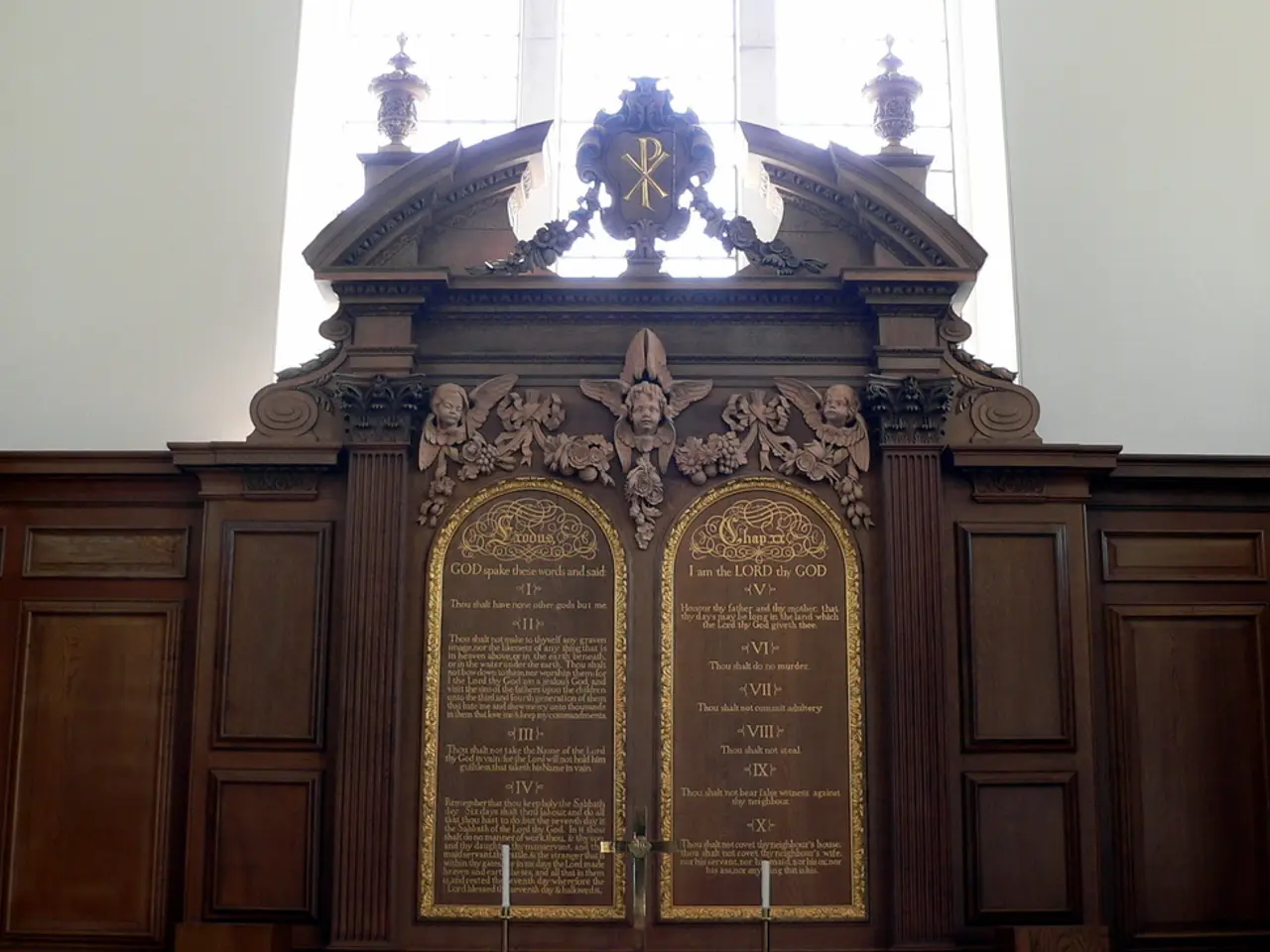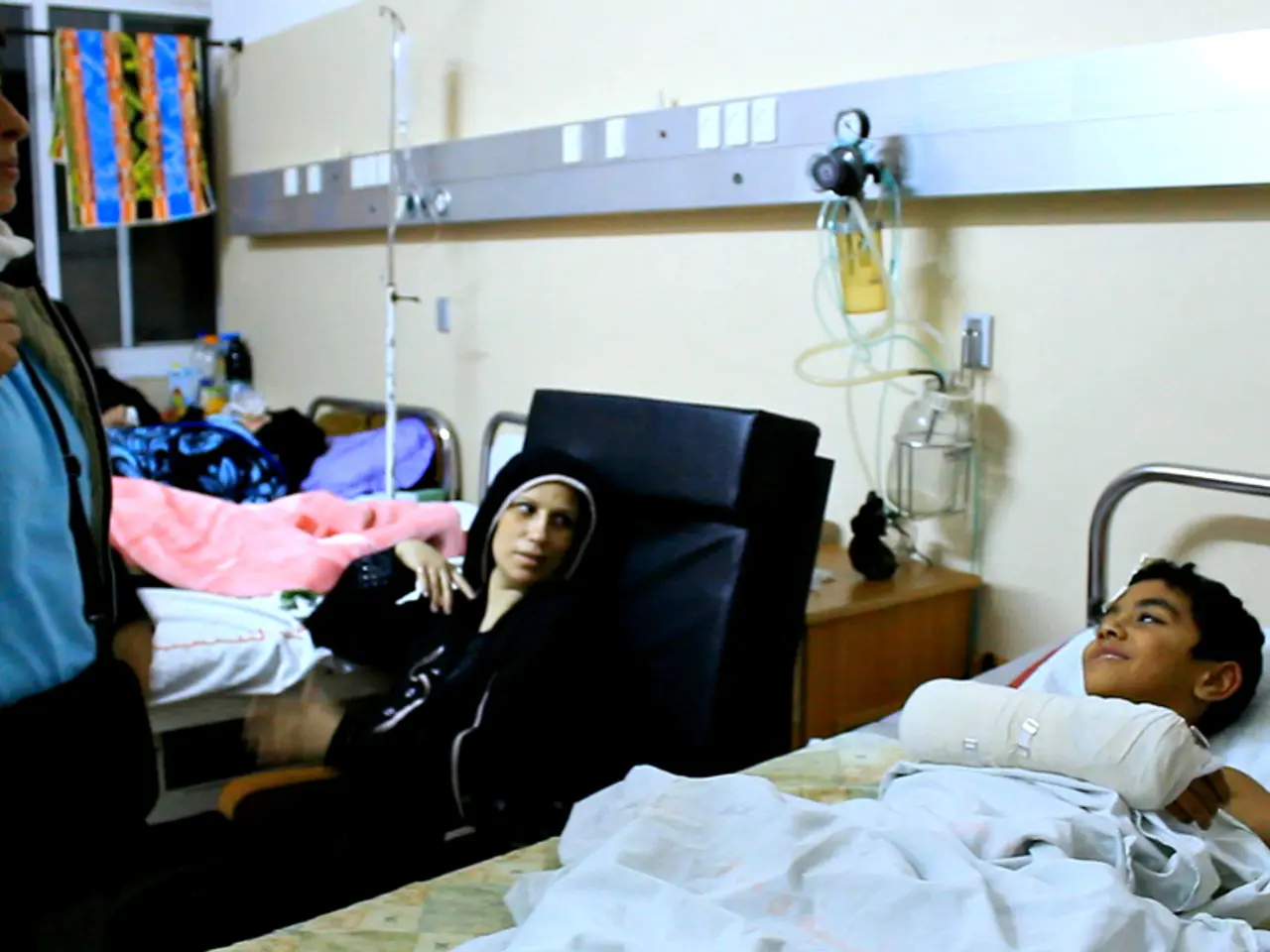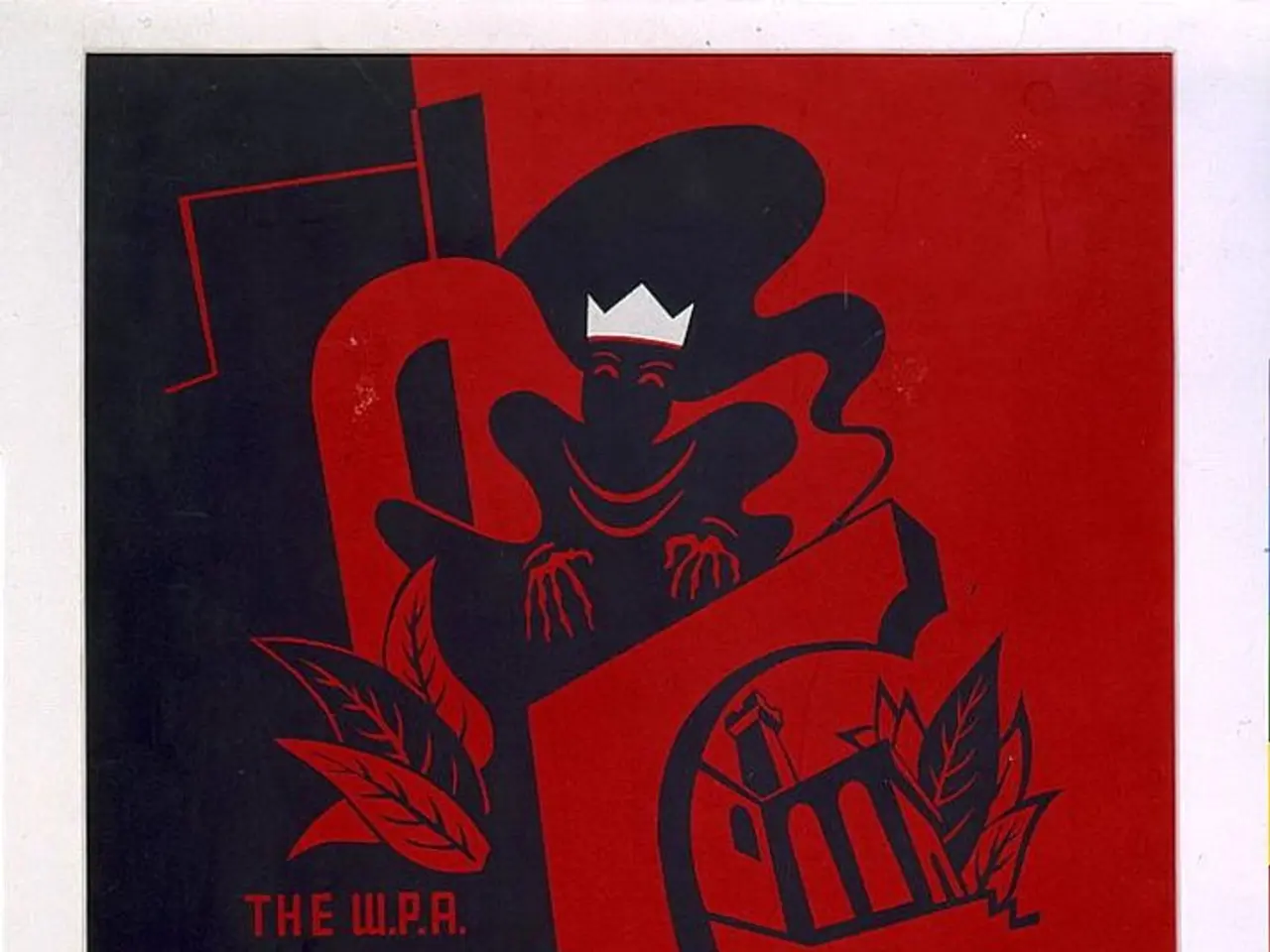Intimate Depiction of Mother's Illness Blurs the Lines Between Art and Reality by Katherine Hubbard
In the decaying Philadelphia mansion that her mother had lived in for decades, Katherine Hubbard created a profound and immersive photographic series titled 'The Great Room'. This project, spanning several years, captures the intimate, often chaotic environment of the house, filled with architectural salvage, spoiled food, tenant complaints, and mountains of unopened mail[1].
Hubbard, using large-format film cameras and experimental darkroom techniques, set up her camera equipment in the home and left it there, allowing it to become a "third wheel" in the household, blending into daily life rather than being a disruptive presence[1]. The images are carefully composed yet never theatrical or staged for the camera; rather, they emerge out of the lived experience and moments of stillness amid chaos[1].
'The Great Room' dissolves the boundaries between art and life, exploring themes of illness, memory, and family dynamics through a formal yet intimate lens[1]. The work resists easy categorization, blending documentary, performance, and sculpture to create a quiet elegy to her mother and their shared space[1]. Its production over several years allowed Hubbard to engage with her mother’s illness not just as subject but as a lived, continuous experience, shaping both the artwork and her emotional engagement with caregiving[1].
Hubbard uses her own body in the images to create a fiction of her mother as the photographer. The antique mirrors in the house serve as a threshold between past and present, and as a way for Hubbard to insert herself into the images, morphing her body and dissolving it in the process[1]. By leaving the mirrors dirty, they become living props in the images, adding a raw, authentic feel to the series.
Moments of stillness emerged within the chaos of the house during the creation of 'The Great Room'. Katherine Hubbard and her mother found fun within the space during the creation process, suggesting that the work opened new relational possibilities within the family setting despite the difficulties of illness[1]. The project thus functioned as both an artistic exploration and a means of navigating complex family dynamics, offering a space for connection and reflection within a challenging context.
'The Great Room' has received recognition in the contemporary photography world, being awarded in the 2025 Rencontres d'Arles Book Awards for best author project[3], underscoring its critical success and the potency of Hubbard’s personal vision. Hubbard was shuttling between New York, Carnegie Mellon in Pittsburgh, and her family's house in Germantown, Philadelphia to care for her mother. Bathing was a way for Hubbard to show the depth of their comfort without asking her mother to reveal herself, creating a powerful bond between them.
In summary, 'The Great Room' is a significant work in Katherine Hubbard’s oeuvre that merges art and life to document and reflect on her mother's illness, the physical space they inhabited, and the evolving dynamics within their family. It reshaped her artistic practice towards an immersive, process-based approach shaped by intimacy, care, and the realities of daily life amidst decline.
- Katherine Hubbard's project, 'The Great Room', delves into themes of aging, mental health, and family dynamics, blending these aspects of life with the realm of art.
- The work, spanning several years, navigates the complexities of relationships within the family setting, revealing moments of connection and introspection amidst the challenges posed by illness.
- The series also touches upon the broader aspects of lifestyle and health-and-wellness, as Hubbard engaged with her mother's illness as a lived, continuous experience, shaping both the artwork and her emotional engagement with caregiving.




